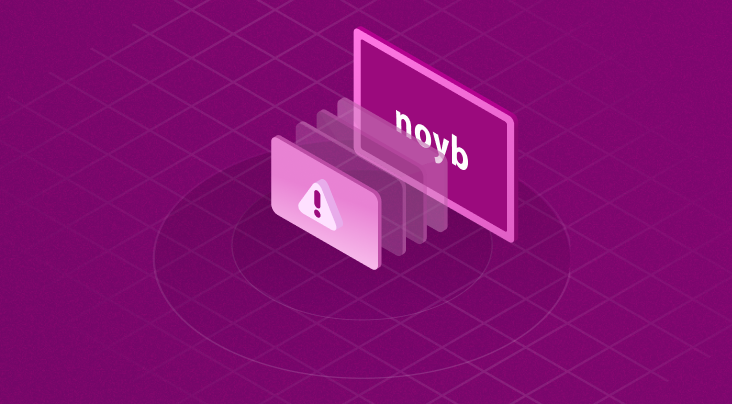Tremendous developments are taking place within artificial intelligence (AI). Over the past several months, technological leaps have redefined business applications of AI and forced organizations to devote adequate resources towards figuring out the best strategies and tactics to leverage the most value for AI’s seemingly limitless potential.
Generative AI stands firm as a transformative force, capable of automating redundant tasks while also exhibiting the ability to produce captivating images, videos, and music. And yet, for businesses, the most critical consideration continues to linger: how best to harness such capabilities.
One possible answer is Generative AI Governance.
Read on to learn more about why Generative AI Governance frameworks represent a strategic roadmap for organizations that can help them navigate the risks, challenges, and opportunities presented while upholding the highest standards of ethical considerations.
Principles of an Effective Generative AI (GenAI) Governance Framework
GenAI technologies promise the transformation of industries, with productivity and innovation at the heart of this transformation. However, with great power comes great responsibility. Toward this end, it is necessary to establish certain guiding principles that will determine the success of a Generative AI governance framework.
These include:
A Human-Centric Design
Generative AI systems must be designed with human values at the forefront. This involves ensuring that the content generated aligns with societal norms, is culturally sensitive, and respects user privacy. Some steps organizations can take towards that end include the following:
- Committing to undertake all possible measures to ensure any and all AI-generated outputs are unbiased, non-discriminatory, and take a diverse range of perspectives into consideration
- Placing great emphasis on honoring all relevant data privacy and protection requirements, particularly ones involving user data and AI capabilities.
Transparency and Explainability
Transparency in AI decision-making is crucial. Users must be empowered with greater insights and transparency into how AI-generated content is produced, the algorithms involved, and the data sources used. Steps organizations can take in that regard include:
- Leveraging the privacy policy on the main website to provide the public easy access to resources that explain the underlying logic at play with any AI algorithms
- Providing greater clarity on the organization’s internal methodology to identify, eliminate, and prevent any instances of bias within the AI-generated output.
Accountability and Responsibility
Defining clear lines of responsibility is essential to address issues arising from AI-generated content. Content developers and organizations must take ownership of both positive outcomes and challenges. This can be done by:
- Engaging all relevant stakeholders, including users and industry experts, in the accountability process via consistent feedback
- Having dedicated personnel internally to address any identified lapses or content anomalies and forwarding such issues to relevant stakeholders promptly.
Risks & Challenges of a GenAI Governance Framework
Ideally, businesses should approach the implementation and wider adoption of a GenAI governance framework holistically. Doing so can allow an organization to recognize, evaluate, and address any identified blindspots within its internal practices and stay agile in a highly dynamic technological environment.
The most frequent challenges an organization is likely to counter when developing a GenAI Governance framework include the following:
1. Biased Models
Any inherent bias within the AI models can pose a significant challenge for the organization since it can significantly amplify societal biases. Often caused by biased input datasets, this can lead to AI models that generate discriminatory outputs.
Such outputs can result in critical ethical, operational, and regulatory dilemmas for an organization and raise serious concerns about the framework's effectiveness if not appropriately managed.
What Can Businesses Do
a. Regular Reviews and Assessments
Undertaking regular reviews and assessments of all models in use and their generated outputs can go a long way in helping the organization refine and modify its framework depending on any biases and blindspots identified. Therefore, it is crucial that the Governance Framework is designed to facilitate regular assessments and to enable the implementation of recommendations arising from these assessments.
b. Stakeholder Engagement
An organization needs clarity related to such biases to address any identified biases within the models effectively. Engaging with the relevant stakeholders and communities to elicit feedback can help develop a governance framework that properly reflects both the organization's values and addresses the aforementioned concerns.
2. Implementation of the Framework
Developing a governance framework and resolving its related issues is one aspect, but implementing the framework poses its own set of challenges. The process can be complex and resource-intensive, demanding significant effort in terms of planning, coordination, and project management. Consequently, this complexity opens the door to inefficiency and errors. Furthermore, any misjudgments in resource allocation can hinder the framework's implementation right from the beginning.
What Can Businesses Do
a. Clear Definition of Roles & Responsibilities
An effective way to ensure all human resources are utilized most efficiently is by defining each role and its corresponding responsibilities related to implementing, monitoring, and enforcing the governance framework.
b. Continuous Training
An organization's GenAI governance framework is likely to experience numerous changes and modifications due to the dynamic nature of GenAI. New capabilities and functionalities will be integrated into the framework to enhance its effectiveness. It is crucial for the organization to take proactive steps to ensure its employees are adequately educated and trained on these new additions. This approach will not only boost the productivity of the new functionalities but also minimize the chances of an extended learning curve.
3. Framework Behind Technology
For an organization that decides to adopt a GenAI governance framework, failure to keep up with technological improvements can be a fatal mistake. As iterated earlier, GenAI remains a distinctively dynamic field, with rapid technological leaps being made seemingly every week. An effective GenAI governance framework must be designed with such possibilities in mind.
What Can Businesses Do
a. Agile Framework Design
Any GenAI governance framework adopted by the organizations needs to be flexible and adaptable in nature, ready to be modified instantly to facilitate the inclusion of new technologies and applications. Proactiveness at this juncture can help organizations avoid the unnecessary hassle of starting things over in the long run.
b. Regular & Relevant Updates
To accommodate new technologies and applications, an organization needs to be aware of any and all new capabilities and functionalities that may be relevant. The latter is important as not every new feature needs to be included, only ones that proffer better effectiveness and efficiency to the organization’s immediate needs.
c. External Expertise
For organizations willing to devote resources towards understanding where and how to devote resources, engaging with external expertise, such as individual consultants and research institutions, offers the chance to be aware of new developments and participate in the early adoption of such developments. Of course, an organization must fully measure the perceived benefits against the risks of early adoption since very little will be known about the potential implications for businesses.
4. Employee Concerns
This is one major challenge for businesses that has less to do with the technical aspects of the GenAI governance frameworks and more to do with the personnel using the framework. An organization that does not take the necessary steps to properly educate, inform, and convince its personnel on how any such frameworks are designed to make their jobs easier risks having a workforce that is both resistant and skeptical of the entire process. Such an environment will not only hinder the adoption process but diminish the governance framework's effectiveness.
What Can Businesses Do
a. Transparency In Communication
This may seem simple, but being transparent, unambiguous, and straightforward about the exact purpose and benefits the framework brings to the organization and the personnel themselves is any organization’s best chance of alleviating personnel concerns. Identifying key concerns and addressing them individually will also be helpful towards such an end.
b. Involve Employees
Rather than creating a one-way paradigm, employee feedback should be both solicited and incorporated into the development and implementation of the framework. Doing so actively involves the personnel and gives them a practical voice in how the organization uses the framework.
5. A Siloed Approach
Businesses increasingly identify siloed approaches towards various objectives within an organization as a major issue. Whether it’s marketing, software development, or quality assurance, a siloed approach leads to inconsistencies within a team that produces inefficient results. It is no different when it comes to the GenAI governance framework. In this instance, a siloed approach will only undermine the credibility of the framework.
What Can Business Do
a. Centralized Oversight
A centralized body, in the form of a committee or an internal administrative body, can help create a single and consistent interpretation related to applying the governance framework within the organization. The presence of such a body would eliminate the possibility of duplication of efforts and any other inconsistencies that result from a siloed approach.
b. Regular Audits
Regular audits and assessments can identify any inconsistencies in the final outputs as well as the various practices of different departments within an organization related to the governance framework. Once identified, the centralized oversight body can take the necessary steps to eliminate such inconsistencies.
Risks In Generative AI
Generative AI models are not without their risks, much like another opportunity available to an organization. In the case of GenAI, these risks can be broadly categorized into two distinct categories: inherent risks and governance challenges.
Inherent Risks
GenAI models are not immune to biases. Such biases are a result of the biases present within the training dataset. Outputs generated via such datasets reflect and perpetuate such biases. Hence, organizations need to undertake a comprehensive review of their internal use policy. Similarly, the use of inaccurate, incomplete, or irrelevant datasets will lead to outputs that are just as unreliable.
Once an organization has curated its training dataset to a degree where biased or inaccurate outputs cease or are minimized to a significant extent, it can focus on the input prompts. Poorly defined, ambiguous, or ambivalent prompts will lead to similarly poor, ambiguous, and ambivalent outputs. Precision is the key when considering input prompts and developing input instructions.
Regulations that require organizations to develop proportionate legal frameworks for issues related to data privacy, intellectual property, and compliance are becoming increasingly common worldwide. A proactive approach is essential for organizations that aim to stay ahead of the responsibilities these obligations impose.
Each of these risks is covered in greater detail here and provides a greater understanding of the context of these risks as well as the necessary steps an organization can take to mitigate them.
Governance Challenges
Adopting a robust and proactive approach toward developing relevant policies and procedures is critical when aiming to address the aforementioned inherent risks. However, the development of such policies and practices may represent a challenge in itself for an organization.
GenAI governance is an expansive and dynamic process that requires a consistent and continuous oversight of all AI systems to identify and promptly address any issues adequately.
Regular audits, evaluations, incorporation of feedback, and compliance efforts are all practical and effective steps an organization can take to maintain and ensure the continuous ethical use of GenAI models.
How Securiti Can Help
A well-designed and implemented GenAI Governance Framework can empower organizations to leverage AI capabilities to their maximum potential and do so in a comprehensively responsive manner.
Hence, it can foster a culture of ethical AI usage within an organization, leading to regulatory compliance and trust with all relevant stakeholders and the wider community.
The Securiti Data Command Centre is an enterprise solution based on a Unified Data Controls framework. It enables organizations to optimize their oversight and compliance with all major global data privacy and AI-related regulations.
Within the Data Command Centre, organizations gain access to vital modules and products that help ensure compliance with various requirements placed on them by these regulations. For instance, the privacy notice module empowers organizations to have a dynamic privacy policy that reflects their most current data collection and processing practices in addition to how and, if any, AI tools are leveraged during this process.
Similarly, the DSR automation module provides comprehensive and in-depth insights associated with all user data requests, such as requests to cease using their data for automated profiling. Other modules provide critical services and features along these lines that empower an organization to comply with any regulations they may be subject to.
Request a demo today and learn more about how Securiti can aid your organization in leveraging AI while remaining compliant with any legal requirements.













